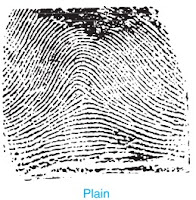Phases of Digital Forensics
Following are the phases of digital forensics:
(i) Collection of information/ Pre search consideration
Before reaching the scene of the crime, the expert should have preliminary knowledge about the nature of the cybercrime. This information can be obtained from the first responding officer. Pre-search consideration helps the investigator to physically and mentally prepare for the crime and helps him to carry relevant tools to the scene of the crime.
Following are the three steps involved in pre-search consideration:
(a) Securing and Evaluating
In this stage, the expert asks questions regarding crime and pays special attention to the safety issues. He also checks the consent issues.
(b) Conducting preliminary interviews
Take the preliminary interview of the owner or user of the computer system found at the scene of the crime. If the system is password protected then an expert may ask the access to the system. Also, try to know the purpose of the use of a computer by the user.
(c) Documentation of electronics found at the crime scene
Record the condition of the system, storage media available, other electronic devices, and other conventional evidence found at the scene of the crime.
Check the power status of the computer and so the photography and sketching of the scene of the crime.
(ii) Identification of digital evidence
This phase includes identifying evidence related to the electronic device in storage media, hardware, operating system, network, and application. This helps the expert to identify the evidence and where it is stored.
(iii) Collection and preservation of digital evidence
After the identification, we need to collect and preserve the electronic device and the data present in it so that the data cannot be tampered by climatic conditions or some unauthorized user. For example, a Hard disk should be collected and preserved in an Anti-static cover so that a charge cannot develop on the surface of the disk which can damage the data stored in it.
(iv) Analysis of digital evidence
After the preservation of the device and data, its analysis is done at the forensic lab. In this phase, the expert makes copies of the data for analysis, recovers the deleted files, and verifies the recovered data. This is the most crucial phase as the whole investigation depends on the analysis of digital evidence.
(v) Documentation of results
After analysis, the data, the conclusion, and the result should be properly documented. The result may have a record that contains all the recovered and available data which helps in recreating the crime scene.
(vi) Presentation
This is the final phase of the investigation in which the report is presented in the court to solve the case.
Related Post:



